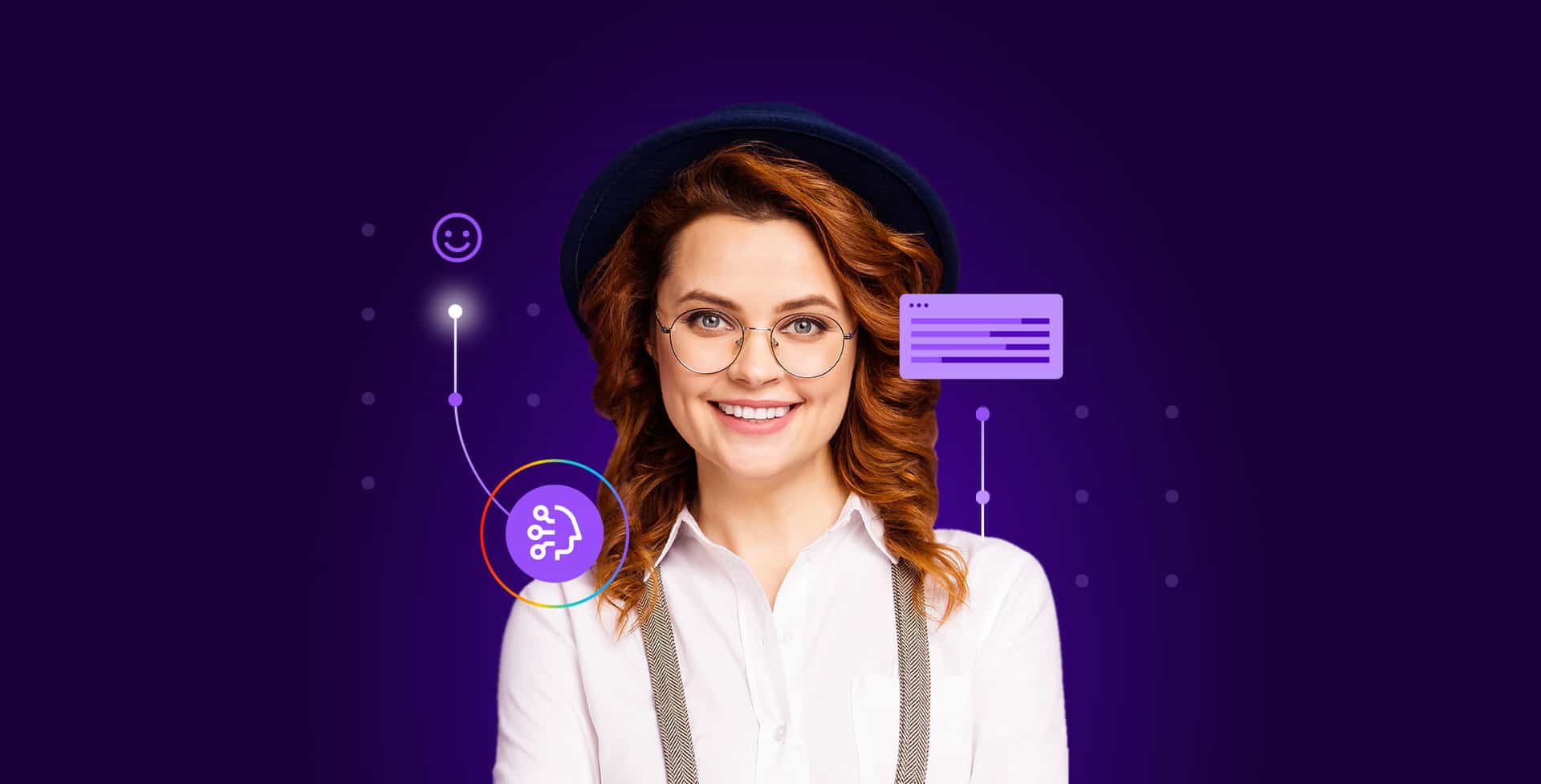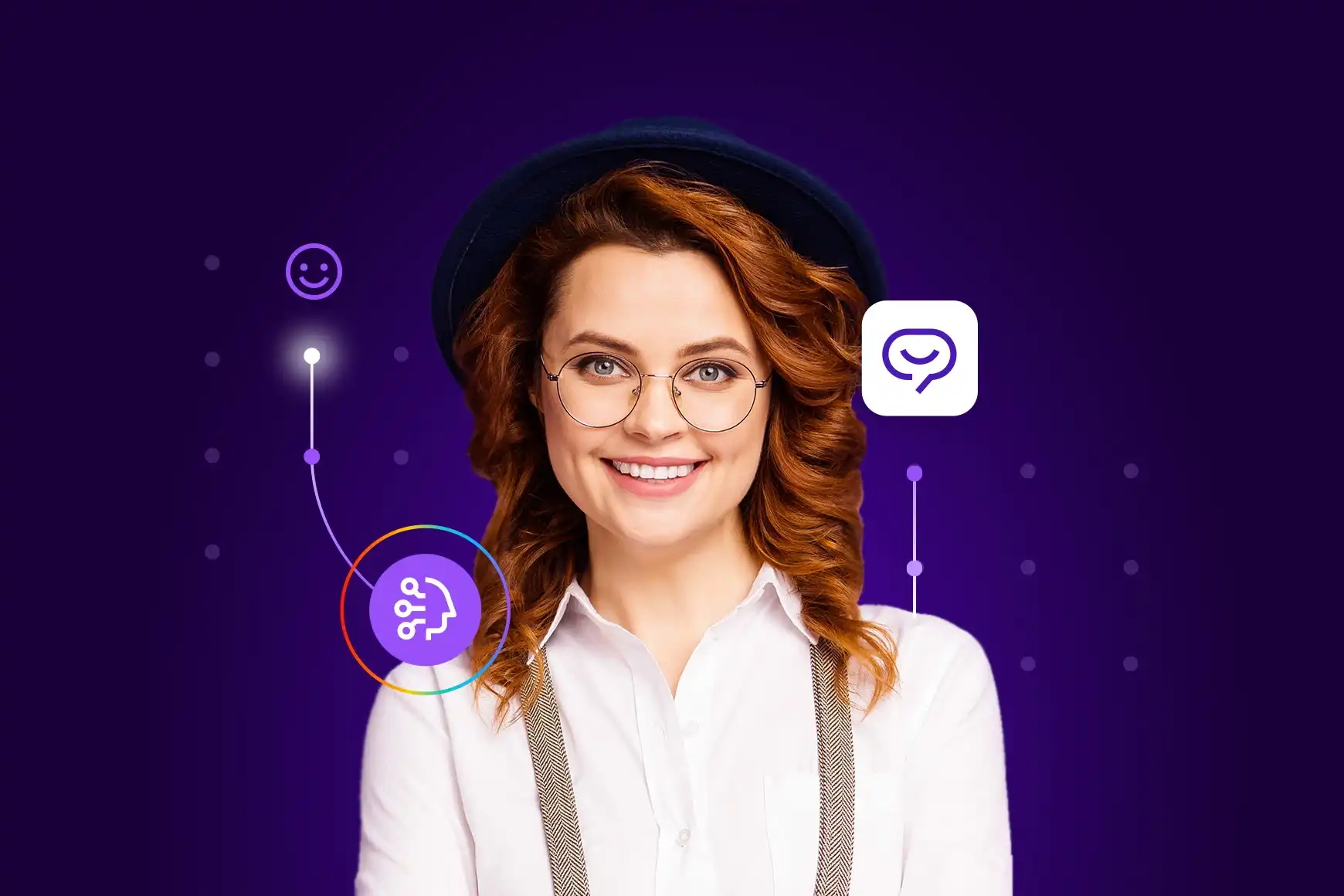GPT-4 e l'agente del servizio clienti del futuro

By Ben Rigby
0 minuti di lettura

Quindi, GPT-4 è ora disponibile. A questo punto, probabilmente ti sentirai sopraffatto dalla valanga di notizie su ChatGPT e sui modelli linguistici di grandi dimensioni (LLM). Si potrebbe essere tentati di dire "Un altro ChatGPT? E allora?" Ma se lavori nel settore dei contact center a qualsiasi livello, questa è la tendenza più importante da monitorare. Se lavori nel settore del servizio clienti, c'è ben poco di quello che stai facendo oggi che sembrerà lo stesso tra due anni, proprio grazie a ChatGPT.
Per cominciare possiamo affermare che GPT-4 è la prossima evoluzione dell'LLM che rappresenta il cuore di ChatGPT. È il modello di intelligenza artificiale che risponde alle tue richieste quando interagisci con ChatGPT, sia che tu ponga una domanda o chieda di completare una frase. Quando gli poni una domanda sul servizio clienti (ad esempio, "Quali sono i 10 metodi più efficaci per migliorare l'esperienza del cliente?"), risponde alla tua richiesta o completa il tuo pensiero utilizzando tutto ciò che ha appreso da una quantità straordinariamente grande di dati di addestramento.
Come si comporta GPT-4 rispetto a GPT-3 nelle interazioni con il servizio clienti?
GPT-3 è la versione precedente rispetto a quella che alimenta attualmente ChatGPT. GPT-4 rappresenta un passo avanti rispetto a GPT-3. È più accurato, dettagliato e preciso, ed è in grado di svolgere compiti per cui GPT-3 non era ancora pronto.
Solo per citare una delle nuova funzionalità, GPT-4 è in grado di accettare input di immagini e produrre output di testo. Per dirla in termini reali, immagina che il contact center del tuo provider Internet sia potenziato con GPT-4 e che la tua connessione Internet si interrompa. L'agente umano o l'agente virtuale ti chiederà di scattare e condividere una foto delle enigmatiche luci lampeggianti sulla parte anteriore del modem. L'agente potrebbe quindi chiedere a GPT-4: "Cosa c'è che non va in questo modem?" E GPT-4 potrebbe rispondere: "Il rosso sulla porta etichettata come ‘Diag’ significa che l'antenna wifi non funziona correttamente." Non c'è bisogno di una lunga conversazione o di smanettare per arrivare al nocciolo del problema.
Ma quanto è preciso GPT-4 in un contesto di servizio Clienti?
GPT-4 non è infallibile. Come afferma OpenAI , offre i "migliori risultati di sempre (anche se tutt'altro che perfetti) in termini di accuratezza, capacità di seguire le istruzioni e di rifiutare di andare oltre i limiti stabiliti." OpenAI è consapevole delle critiche mosse a questi modelli, che tendono a produrre risultati imprecisi e distorti.
Naturalmente, questa è la nostra più grande preoccupazione quando utilizziamo questi modelli nel contact center. Fornire risposte accurate e simili a quelle umane nelle interazioni con i clienti è una componente fondamentale della soddisfazione del cliente.
Vuoi saperne di più?
Contatta il nostro team per scoprire come Talkdesk può migliorare le tue Soluzioni di Software per Call Center.
Ma come si possono misurare i miglioramenti introdotti con GPT-4?
Sebbene OpenAI fornisca diversi parametri di riferimento per evidenziare il miglioramento delle prestazioni, uno dei risultati più significativi è il risultato di GPT-4 nell'esame di abilitazione alla professione legale negli Stati Uniti. GPT-3 ha ottenuto un punteggio che lo colloca nella fascia più bassa, inferiore al 10%. GPT-4, invece, si posiziona nella fascia alta del 10%. Esatto, hai capito bene: GPT-4 non solo ha le competenze necessarie per superare l'esame, ma lo fa con un risultato eccellente. Per fare un paragone, John F. Kennedy, il 35° Presidente degli Stati Uniti, non superò l'esame di abilitazione legale per due volte, riuscendo a passarlo solo al terzo tentativo.
Tra l'altro, GPT-4 supera anche esami di ammissione universitari molto impegnativi negli Stati Uniti, come il SAT, il GRE e il LSAT. Inoltre, GPT-4 è anche un sommelier certificato. Quindi, non esitare a portarlo alla tua prossima cena elegante per consigli su un buon abbinamento di vini (e magari anche una conversazione interessante sulla storia dell'arte, se la serata non va come previsto).
GPT-4 e l'agente del servizio clienti del futuro.
Per il contact center, il ruolo dell'agente del servizio clienti del futuro non è mai stato così chiaro. I posti di lavoro degli agenti di livello iniziale stanno scomparendo. Gli agenti non avranno più bisogno di rispondere a chiamate, e-mail e SMS grazie alle soluzioni basate sull'intelligenza artificiale.
Tranne che in scenari di emergenza, quasi tutte le richieste in arrivo al contact center saranno prima gestite da un sistema automatizzato. Questo sistema automatizzato avrà una breve conversazione con il cliente per comprendere il suo problema e avviare un processo di risoluzione. La tipica funzione di triage, un tempo svolta dall'uomo, non sarà più necessaria. Questo è l'equivalente del contact center al pedaggio dei ponti.
È ovvio che in certe situazioni vogliamo che gli esseri umani continuino ad accogliere i clienti. Anche nel caso dei caselli, è difficile immaginare che le aziende che gestiscono i ponti continuino ad assumere persone per svolgere questo lavoro.
Dopo il triage, i sistemi automatizzati cercheranno di risolvere fino all'80% delle richieste del servizio clienti. Considera il livello di difficoltà che la maggior parte di noi affronta per superare l'esame di abilitazione forense o altri esami impegnativi negli Stati Uniti. Non si tratta di prove facili e richiedono mesi di studio e di preparazione. C'è un'intera industria da miliardi di dollari che ci aiuta a prepararci per questi esami. Risolvere la maggior parte dei problemi del servizio clienti non richiede una grande preparazione e GPT-4 sta già superando questi esami.
Con GPT-4, non c'è alcun fattore tecnico che impedisca a un sistema automatizzato di risolvere rapidamente e correttamente l'80% dei problemi dei clienti. La vera questione è quanto siamo disposti, come clienti, a interagire con i sistemi automatizzati e con quale rapidità le aziende saranno in grado di offrire soluzioni completamente automatizzate.
Per rispondere a quest'ultima domanda, se le aziende continueranno a vedere il servizio clienti come un centro di costo, scommetto che si sposteranno rapidamente verso un'automazione completa. Non credo che considerare il servizio clienti solo come un centro di costo sia necessariamente l'approccio giusto, ma spesso questa è la prassi comune.
Anche in questo caso, farò una previsione. Gli agenti di contact center del futuro si divideranno in due campi:
- Agenti di alto valore – gestiscono conversazioni particolarmente complesse, di alto valore economico o che richiedono un elevato grado di empatia, quelle situazioni che rappresentano il 20% dei casi non automatizzabili.
- Gli agenti di supervisione – sono responsabili della supervisione di un team di bot che gestisce l'80% delle conversazioni del servizio clienti, intervenendo per riportare i bot in carreggiata quando incontrano difficoltà.
L'agente di supervisione è un concetto nuovo che presento qui per la prima volta. Con GPT-4 e le tendenze emergenti degli LLM (modelli di linguaggio di grandi dimensioni), sono fermamente convinto che la maggior parte degli agenti del futuro ricopriranno questa funzione.

Webinar
ChatGPT e il futuro del Servizio Clienti
Scopri come ChatGPT cambierà radicalmente il ruolo degli agenti del servizio clienti in questo webinar gratuito.
Che cos'è un agente di supervisione e come GPT-4 influenzerà questo ruolo?
Immagina decine di conversazioni simultanee, che avvengono tramite voce, e-mail, SMS, chat e WhatsApp, tra un cliente e un bot. Quando il bot ha bisogno di assistenza, invia una richiesta di aiuto, e l'agente di supervisione interviene per rimetterlo in carreggiata. In rari casi, l'agente può decidere di prendere il controllo diretto della conversazione. Con l'esperienza, l'agente diventa sempre più abile nella supervisione, riuscendo a gestire un numero crescente di conversazioni: un agente alle prime armi potrebbe supervisionare solo due conversazioni simultanee, mentre un esperto potrebbe arrivare a gestirne decine. Questo agente specializzato nella supervisione acquisirà quindi una grande competenza nell'aiutare il bot a servire i clienti senza interruzioni significative.
Quali sono i prossimi sviluppi nelle operazioni di servizio clienti e nell'IA?
So che potresti considerare questo scenario come a una sorta di distopia robotica, specialmente se sei un agente di contact center entry-level. Ma scommetto che tra non molto tutti noi guarderemo a questo scenario come si guarda al casello autostradale, ovvero, meno dispendioso per l'azienda che lo gestisce e più piacevole per il cliente finale, perché è più veloce e senza attriti.
Chi lo sa? Forse il GPT-4 aprirà anche la strada a una prospettiva del contact center come motore di crescita piuttosto che come centro di costo, creando nuove opportunità per gli agenti umani nel contesto del servizio clienti da remoto. C'è una grande opportunità inesplorata in cui esperti e chatbot del servizio clienti possono lavorare fianco a fianco. Infatti, uno studio del 2022 della MIT Sloan ha rilevato che il 60% dei dipendenti intervistati che già utilizzano l'intelligenza artificiale la considerano un valido "collega" di lavoro piuttosto che una minaccia.
Il nostro atteggiamento nei confronti dell'IA sta già cambiando e il contact center che non si mette al passo con i tempi rimarrà indietro. Il GPT-4 è l'ultimo colpo in canna nella battaglia per la supremazia dell'IA e non mi aspetto che Google o le altre piattaforme di IA generativa restino con le mani in mano a lungo. Non preoccuparti, Talkdesk si dedica all'integrazione di questa tecnologia trasformativa nel contact center e continuerà a fornire le proprie conoscenze ed esperienze per aiutarti a creare una strategia di customer experience che ti accompagnerà verso il futuro.
Hai trovato utili queste informazioni?
Scopri di più su come Talkdesk può migliorare la qualità delle tue Customer Experience.








